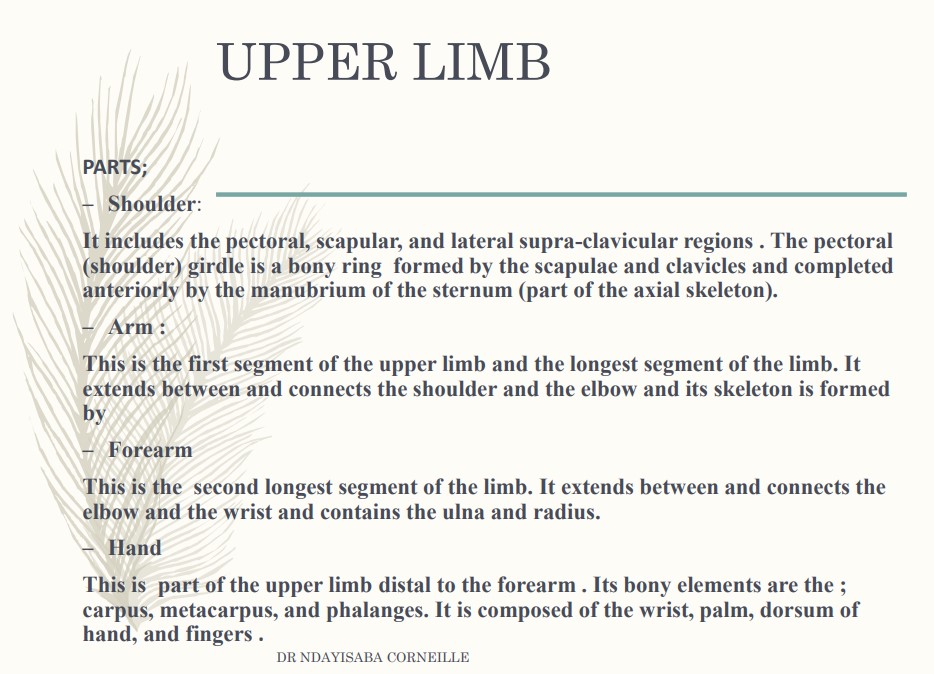Musculoskeletal of the Upper Limb
Summary:
The Musculoskeletal of the Upper Limb system comprises various structures that enable movement and stability in the body. Dr. Ndayisaba Corneille, a medical professional with qualifications in MBChB, DCM, BCSIT, and CCNA, provides an overview of the musculoskeletal system, focusing on the upper limb.
The upper limb is divided into several parts, including the shoulder, arm, forearm, and hand. The shoulder region comprises the pectoral, scapular, and supra-clavicular areas, forming a bony ring known as the pectoral girdle. The arm, the longest segment of the upper limb, connects the shoulder and the elbow, while the forearm extends between the elbow and the wrist, housing the ulna and radius. Distal to the forearm is the hand, which comprises the carpus, metacarpus, and phalanges, encompassing the wrist, palm, dorsum of the hand, and fingers.
Dr. Ndayisaba highlights specific muscles in the upper limb, beginning with the pectoralis major, a large fan-shaped muscle in the pectoral region that facilitates adduction and medial rotation of the humerus. The pectoralis minor, a smaller muscle, lies beneath the pectoralis major and aids in depressing the shoulder. The serratus anterior muscle, situated laterally in the chest, rotates the scapula and helps raise the arm.
Moving to the scapula region, the deltoid muscle plays a significant role. It has three parts, each with different origins and actions, including flexion, extension, medial rotation, and arm abduction. The teres major muscle contributes to arm extension, adduction, and medial rotation. The rotator cuff muscles, including the subscapularis, supraspinatus, infraspinatus, and teres minor, stabilize the shoulder joint.
In the forearm, the muscles can be classified into superficial, intermediate, and deep groups. The superficial muscles, such as the flexor carpi ulnaris, flexor carpi radialis, and pronator teres, perform flexion and pronation of the forearm. The intermediate muscle, the flexor digitorum superficialis, flexes the fingers and wrist.
Excerpt:
Musculoskeletal of the Upper Limb
UPPER LIMB
PARTS;
– Shoulder:
It includes the pectoral, scapular, and lateral supra-clavicular regions. The pectoral (shoulder) girdle is a bony ring formed by the scapulae and clavicles and completed anteriorly by the manubrium of the sternum (part of the axial skeleton).


Reviews